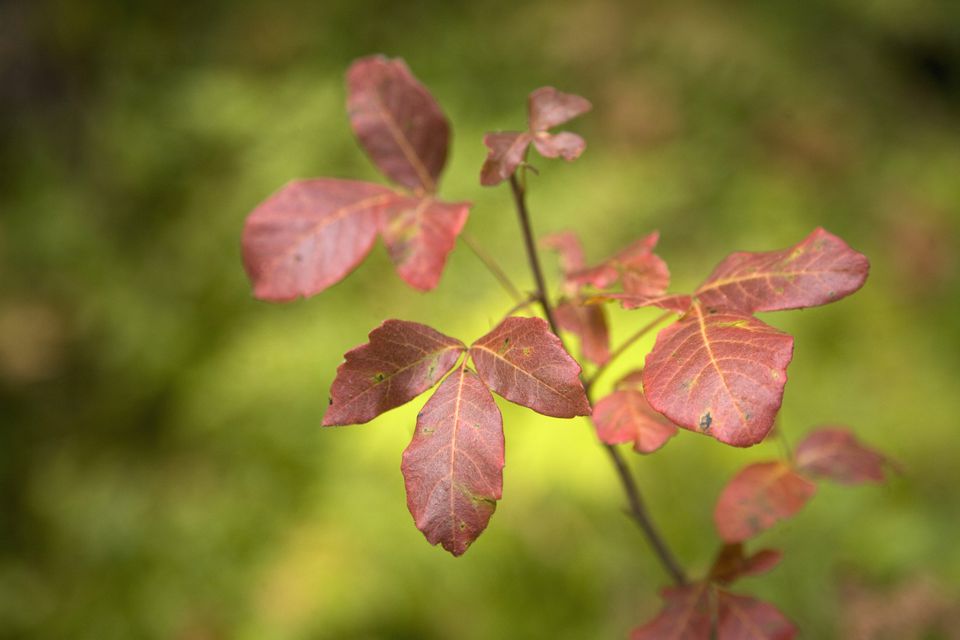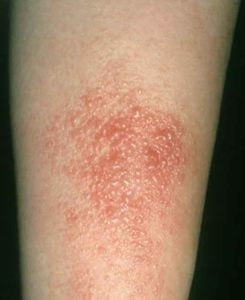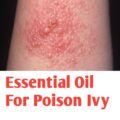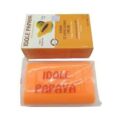What is poison oak?
Poison oak, is a woody vine or shrub in the sumac family, Anacardiaceae. It is widely distributed in western North America, inhabiting conifer and mixed broadleaf forests, woodlands, grasslands, and chaparral biomes. Poison oak releases an oil called urushiol when damaged. The allergen is absorbed into your skin when you touch the plant. According to the University of California Agriculture & Natural Resources, only about 15 to 20 percent of people aren’t allergic to poison oak.
How do you identify poison oak?
When it comes to identifying poison ivy and oak, a quick rule of thumb is: Leaves of three, beware of me. Poison Sumac: This rash-producer thrives in the water. It’s usually found in swampy or boggy areas where it grows as a small tree or tall shrub.
What is poison oak rash?
A poison oak rash causes an itchy, blistering rash caused by an oil found in poison ivy, poison oak, or poison sumac plants known as urushiol. When this oil touches your skin, it often causes an itchy, blistering rash. Most people can safely treat the rash at home.
How does poison oak rash look like?
A poison oak rash appears where contact with the oil occurred. However, it can also form on parts of the body not contacted by the plant. It normally starts as an itching and mild irritation and gradually worsens developing into a red rash that gradually gets itchier. Bumps will form, which can turn into blisters.
How do I know if I have poison oak?
If you’re allergic to poison oak, signs will begin to appear 1 to 6 days after exposure. Most of the time, you’ll notice it within the first 24 to 48 hours. The most obvious evidence of an allergic reaction is skin rash, also called dermatitis. First, you may notice some stinging, itching, and minor skin irritation.
Can poison oak kill you?
The oil is on the leaves, stems, branches and the roots can be toxic, you can’t just burn it because when you do the oil becomes airborne in the smoke, and inhaling it can kill you especially if one is severely allergic to it. Being severely allergic to the oil (urushiol) may cause anaphylaxis or severe swelling of the airway which can lead to death as the rash will appear on the lining of the lungs, causing extreme pain and possibly fatal respiratory difficulty. Urushiol oil can remain viable on dead poison ivy plants and other surfaces for up to 5 years and will cause the same effect.
How do you get rid of poison oak rash?
Rinsing your skin with lukewarm, soapy water or rubbing alcohol within about an hour of touching poison oak can remove the urushiol and help you avoid a rash — or at least make it less severe. You’ll also need to wash anything else that comes into contact with the plant.
Why is my poison oak rash spreading?
The rash will occur only where the plant oil has touched the skin, so a person with rash can’t spread it on the body by scratching. Even if blisters break, the fluid in the blisters is not the plant oil and cannot further spread the rash.
Should I pop my poison ivy blisters?
Although they may be painful, an open blister can easily become infected and lead to blood poisoning. The blisters form as part of your body’s immune response to poison ivy and oak and are part of the healing process. If they do break, cover the area loosely with a sterile bandage protecting the wound from bacteria.
How long does poison oak rash last?
If you’re allergic to poison oak, signs will begin to appear 1 to 6 days after exposure. Most of the time, you’ll notice it within the first 24 to 48 hours. The most obvious evidence of an allergic reaction is skin rash, also called dermatitis. Like most poison plant rash poison oak rash lasts from five to 12 days. In severe cases, the rash can last for 30 days or longer.
How do you treat poison oak overnight with home remedies?
- Cover the rash with a paste made from cold coffee and baking soda
- Take a warm bath with oatmeal or Epsom salt.
- Rub a banana peel or a watermelon rind over the rash and don’t rinse it off.
- Make a paste from one tablespoon of turmeric root powder with equal parts of lime or lemon juice and apply to the affected area.
The following poison ivy remedies may provide relief from symptoms:
- Rubbing alcohol. Rubbing alcohol can remove the urushiol oil from the skin, helping to minimize discomfort
- Shower or bathe
- Cold compress.
- Resist scratching the skin.
- Topical lotions and creams.
- Oral antihistamines.
- Oatmeal bath.
- Bentonite clay.
What is the fastest way to get rid of poison ivy with bleach?
Baking soda is a good drying agent. Household bleach can be used to remove the poison ivy resin and treat the itch. Dab the affected area with a cotton ball soaked in a mixture of half water/half bleach. If you put this solution on blisters, they should be gone the next day.
What can you spray on the poison oak plant to kill it?
Herbicides that are effective for killing poison oak include glyphosate (e.g., Roundup brand) and triclopyr (e.g., Ortho brand). You can apply herbicide to the stumps of cut plants or to the foliage of uncut plants, but both must be done while the plant is actively growing. For the first method, cut the stem 1 to 2 inches above the ground and apply the herbicide immediately, using a spray tank. The fresh wound will suck in the herbicide, transporting it deep inside where it can do its damage. Applying herbicides to the leaves of poison oak is most effective during the flowering stage (using triclopyr) or fruiting stage (using glyphosate). Spraying the foliage must be repeated until the poison oak is fully eradicated.






